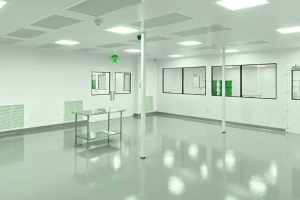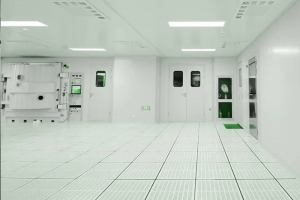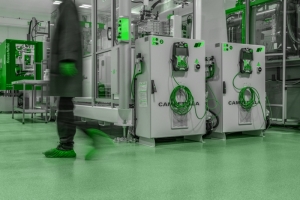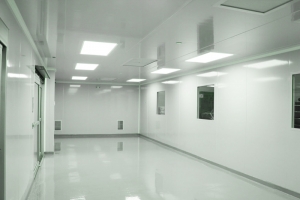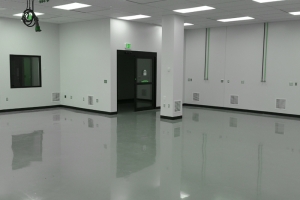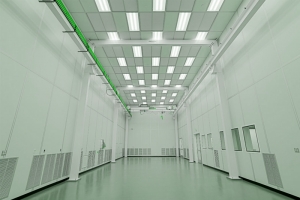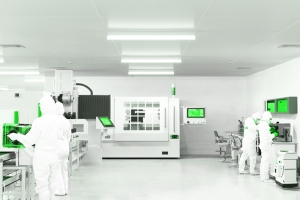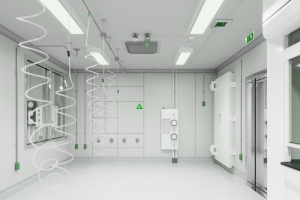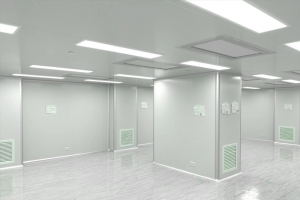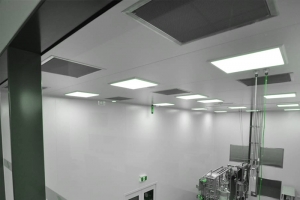Displaying items by tag: tips
Understanding the Cost of A Cleanroom
In industries where precision and cleanliness are paramount, such as pharmaceuticals, biotechnology, aerospace, and electronics, cleanroom environments are crucial. These controlled spaces are designed to minimize contaminants and provide a sterile atmosphere that ensures the quality and safety of products and processes. However, building and maintaining a cleanroom, including sourcing clean room, comes with significant costs, and understanding these expenses is essential for any organization looking to invest in a cleanroom.
What is a Cleanroom?
A cleanroom is a controlled environment that maintains a low level of environmental pollutants like dust, airborne microbes, aerosol particles, and chemical vapors. The design of these rooms includes air filtration systems, controlled airflow, and strict protocols for personnel entering and working in the space. Cleanrooms are classified according to the level of cleanliness they achieve, with higher classifications requiring more stringent controls and advanced clean room.
Key Factors Influencing Cleanroom Construction Costs
Cleanroom construction is a complex and highly specialized process that involves several key factors that contribute to the overall cost. Let’s take a look at the major components:
Size and Complexity of the Space
- Square Footage: Larger cleanrooms require more materials, clean room, and labor, naturally increasing costs. A larger space also demands more advanced air filtration and HVAC systems.
- Cleanroom Classification: Cleanrooms are categorized based on the number of particles per cubic meter in the air. Higher classifications (ISO Class 1-3) demand stricter standards and advanced filtration systems, which are more expensive to install and maintain.
Design and Construction Materials
- Materials: Cleanrooms need to be built with materials that prevent contamination, are easy to clean, and can withstand frequent disinfection. Stainless steel, specialized flooring, and non-porous wall finishes are common choices, but they come at a higher price than standard construction materials.
- Airflow Systems: Cleanrooms require precise air filtration and airflow systems to maintain air cleanliness. HEPA (High-Efficiency Particulate Air) or ULPA (Ultra Low Penetration Air) filters are often necessary and can add to the overall cost of the build.
HVAC and Air Filtration Systems
An advanced HVAC system is essential to regulate the temperature, humidity, and air quality in a cleanroom. Cleanrooms need a high volume of filtered air to maintain the required level of cleanliness, which requires sophisticated, energy-efficient systems that may increase the initial construction budget. Airborne particles must be filtered out continuously, which demands ongoing energy consumption as well.
Compliance and Regulatory Requirements
Cleanroom construction must adhere to a range of regulatory standards, such as ISO 14644 for classification and GMP (Good Manufacturing Practices) for industries like pharmaceuticals. These regulations ensure that the cleanroom meets necessary health, safety, and operational standards, but they can add complexity and cost to the design and build process.
Labor and Expertise
Constructing a cleanroom requires highly skilled labor, including engineers, architects, and contractors with specialized knowledge in clean room and standards. Labor costs can be higher due to the complexity of the project, especially if the construction requires specific expertise or certifications.
Maintenance and Operational Costs
Once the cleanroom is built, it requires ongoing maintenance to ensure it continues to meet cleanliness standards. This includes regular inspection and replacement of filters, calibration of systems, and routine cleaning. These operational costs should be factored into the overall budget for a cleanroom project.
Cleanroom Construction Cost Breakdown
To provide a rough estimate, here’s an overview of potential costs involved in cleanroom construction:
Basic Cleanroom (ISO Class 7-9):
For simpler applications and less stringent cleanliness requirements, the construction cost can range between 100𝑡𝑜300 per square foot. This includes the costs for basic airflow systems, filtration, and standard materials.
Intermediate Cleanroom (ISO Class 5-6):
For more advanced cleanrooms that require a higher level of contamination control, costs can range from 300𝑡𝑜600 per square foot. This level of cleanroom typically requires more sophisticated air filtration systems and materials.
Advanced Cleanroom (ISO Class 1-4):
High-precision industries, like pharmaceuticals or semiconductor manufacturing, require the highest level of cleanliness. These cleanrooms can cost between 600𝑡𝑜1,000 or more per square foot, depending on the complexity and specific requirements of the project.
Factors That Can Influence Overall Costs
Customization: Tailored solutions for highly specialized industries, such as pharmaceuticals or aerospace, can push the cost significantly higher due to the need for more advanced systems and more customized designs.
Location: Costs can also vary based on geographical location. In areas with higher labor rates or stringent local building codes, the price of construction can rise. Additionally, remote locations might increase transportation and installation costs for materials.
Conclusion
Building a cleanroom is a significant investment that requires careful planning and budgeting. The costs can vary widely based on size, complexity, and regulatory requirements, but understanding the factors involved in cleanroom construction can help organizations make informed decisions. While the initial investment can be substantial, maintaining a clean and controlled environment, equipped with the right clean room, is critical to ensuring the quality and success of operations in fields where precision matters.
Ultimately, the cost of building and maintaining a cleanroom should be seen as an investment in product quality, safety, and compliance. By thoroughly understanding the factors that impact cleanroom construction, companies can budget effectively and ensure that their cleanroom environments meet the required standards for years to come.
If you’re considering cleanroom construction for your business, now is the time to start planning. Contact us today to discuss your specific needs and how we can help you build a cleanroom that meets your requirements while staying within budget. Let us guide you through every step of the process to ensure a safe and controlled environment for your operations.
User Requirement Specification for Cleanrooms
In industries where precision, cleanliness, and environmental control are crucial—such as pharmaceuticals, biotechnology, microelectronics, aerospace, and semiconductor manufacturing—cleanrooms and controlled environments are essential.
Is Your Cleanroom Over-Engineered?
Cleanrooms are necessary in sectors like biotechnology, semiconductor manufacturing, and pharmaceuticals where contamination control is key. But when it comes to cleanroom design, there is a common assumption that higher is always better. Higher ISO classifications, tighter tolerances, and more air changes may sound like a good idea, but they can also result in over-engineering, which adds needless complexity and expense without improving performance.
The Hidden Costs of Wrong Cleanroom Panels: Are You Making the Right Choice?
Selecting the proper cleanroom panels for a cleanroom design involves more considerations than just price or appearance. It all comes down to making sure your cleanroom satisfies stringent industry standards, runs smoothly, and delivers on its commitments over time. Unfortunately, choosing the incorrect cleanroom panels can result in substantial unanticipated expenses that have an impact on your overall productivity, compliance, and budget.
Integrating Cleanroom into Existing Facilities
When companies plan to expand their operations or improve quality control, adding a cleanroom often becomes a priority. But here’s what most miss:
Cleanroom Lighting Standards for API Production
In the world of pharmaceutical manufacturing, particularly in the production of Active Pharmaceutical Ingredients (APIs), cleanroom environments are critical. These controlled spaces demand stringent standards to ensure product quality and worker safety. Among these standards, cleanroom lighting plays a pivotal role. This blog explores the key aspects of cleanroom lighting standards for API production.
Clean room certification - the key to clean room safety
In environments requiring the utmost sterility - laboratories, hospitals, pharmaceutical plants or electronics factories - even the slightest contamination can lead to serious consequences. Every piece of equipment, including lighting, must meet stringent cleanliness standards.
Cleanroom Lighting Guide: Select the Right Color Temp. & Lumens
When designing a cleanroom, the choice of ceiling components, particularly the lighting, plays a critical role in determining the overall effectiveness of your controlled environment. Cleanroom lighting is imperative for successful contamination control, ensuring visibility, maintaining precision, promoting safety, and adhering to compliance standards. Color temperature and lumens are crucial factors in choosing cleanroom lighting to ensure compliance with standards and requirements.
What is Requirements for cleanroom lighting
You must follow strict rules for cleanroom lighting to keep your space safe and clean. Cleanroom lighting fixtures help stop contamination and protect people working in the cleanroom. You need to use well-known standards like ISO 14644, GMP, and FDA rules when picking or putting in lighting. These standards tell you how many particles are allowed and how clean your workspace should be.
What are the lighting requirements for a clean room?
Understanding the unique requirements for cleanroom lighting is crucial because it helps address specific challenges, avoid serious problems, and find effective solutions. This ensures that environmental standards are maintained in sensitive spaces.


